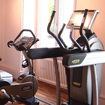Should/Shouldn't for Giving Advice
Elementary level
Description
Materials
Main Aims
-
To provide review and practice of Should/Shouldn't for giving advice in the context of health problems.
Subsidiary Aims
-
To provide fluency and accuracy speaking practice in a dialogue in the context of health problems.
Procedure (45-59 minutes)
T will ask Ss to look at the photo and to say what they see in the picture. T then asks Ss to answer this question in pairs "What do usually do when you are sick?". T then asks one student to mention what his/her colleague said.
Identifying topic language : T asks students to work in groups to make a list of the health problems they know. T gives students 3 minutes. T then asks ICQs: -how many minutes do you have? -are you going to make a list? T monitors without interfering, unless asked for help. T then asks a student from each group to say what they wrote. T writes vocabulary on the board and asks students if there is any word that they do not understand. Introducing the Task: T provides a model of the task by showing students a picture of two friends talking. T mentions the friends' names (Helen and Rose). T asks: - What do you see in the picture? -What do you think Helen and Rose are talking about? T then asks students to listen carefully for gist and answer this question: "What are Helen and Rose talking about?". T then asks ICQs: - Are you going to read or watch a video? -How many people are in the video? - How many questions should you answer? T asks Ss to check their answers together. T asks a couple of students to answer the question. T asks students to listen again and take notes while answering these two questions: - What's wrong with Rose? - According to Helen, what should Rose do to feel better? T asks ICQs -How many questions should you answer? -Are you going to take notes? T asks students to check their answers together. T then asks a couple of students to answer the questions.
T introduces the task by telling students that they need to create a dialogue together. T highlights that the task has two main parts: 1- One of the students should talk about at least 3 health problems. 2- The other students should give different pieces of advice. T highlights that the dialogue should last for 2 minutes and that students will be asked to act the dialogue in front of the class and that they are not allowed to read. Ss have 2 minutes to prepare. T asks ICQs: -Are you going to make a dialogue? -Are you allowed to write the dialogue or just take notes? -How many minutes should the dialogue be? T monitors without interfering (feedback will be given in later stages). T then asks students to act the dialogue in front of the rest of the class.
T asks Ss to sit in groups and talk about how they prepared their dialogues by answering these questions: 1- what kind of language was needed? (T mentions that students should work together and exchange ideas). 2-What kind of language was used? (the actual language that Ss used). 3-How successful were your friends'/your task was successful and why? 4-What challenges faced you in preparing for the task and while doing the task? 5-What is your advice to overcome these challenges and why? T tells students that each team needs to choose one of them to give a presentation to the whole class about how they planned the whole task covering all the previously mentioned points. T mentions that Ss have 8 minutes to do this. T monitors and does not interfere unless asked for help.
T nominates a student from each group to present to the whole class how his/her team planned for the task. T asks students to write any questions they have to ask the presenter before he/she goes back to his/her seat. T sits at the back of class and take notes.
T clarifies the meaning, form, and pronunciation of should/shouldn't by highlighting some of the students' answers on the whiteboard. You should drink more water. T elicits MFP -we use should to give advice? -you, subject or verb? subject+..........(should)+ verb........(infinitive). T models and drills Is this sentence positive or negative? -You Shouldn't drink much coffe. subject+shouldn't+verb infinitive. T then models and drills.
T asks students to redo the task in the form of a video as homework and submit their answers via email.

